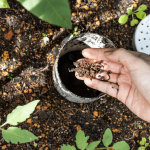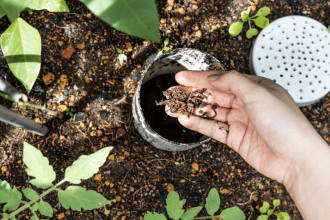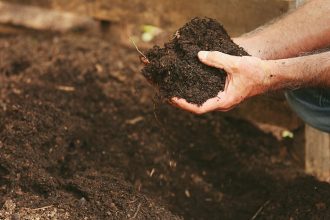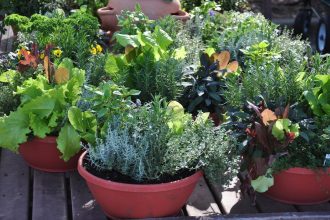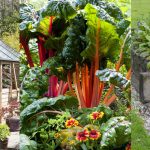In the lush and vibrant world of vegetable gardening, companion planting reigns supreme as a timeless technique that allows plants to thrive in harmony and support each other’s growth. By strategically pairing compatible vegetation, you can create a healthy and bountiful garden that is not only aesthetically pleasing but also incredibly productive. Join us as we explore the fascinating world of companion planting and discover how you can cultivate a flourishing vegetable garden that is sure to delight both your senses and your palate.

Benefits of Companion Planting in Vegetable Gardens
Companion planting is a gardening technique where different plants are grown close together to benefit each other in various ways. This method can be extremely beneficial for creating a healthy and thriving vegetable garden. By strategically planting certain vegetables together, you can improve soil quality, increase crop yield, and naturally prevent pests and diseases.
One of the key benefits of companion planting is the ability to naturally control pests. For example, planting marigolds near tomatoes can help repel nematodes, while planting basil near tomatoes can deter aphids. By using companion planting to naturally deter pests, you can reduce the need for harmful pesticides and chemicals in your garden.
Additionally, companion planting can improve soil health by diversifying the types of plants in your garden. For example, planting nitrogen-fixing plants like beans or peas near heavy feeders like tomatoes or corn can help replenish the soil with essential nutrients. This can lead to healthier plants and a more sustainable garden in the long run.
Key Strategies for Successful Companion Planting
When it comes to creating a thriving vegetable garden, companion planting is a valuable technique to consider. By strategically pairing compatible plants together, you can promote growth, deter pests, and improve overall yield. Here are some key strategies to keep in mind for successful companion planting:
- Choose Complementary Plants: Select plants that benefit each other when grown in close proximity. For example, planting basil near tomatoes can help repel pests and improve flavor.
- Avoid Planting Incompatible Pairs: Some plants can hinder the growth of others when planted together. Make sure to research which plants should not be planted near each other to avoid negative effects.
- Create Plant Guilds: Group together plants that support each other’s growth. For instance, planting corn, beans, and squash together creates a symbiotic relationship known as the Three Sisters, where each plant benefits from the others.
Companion Planting Chart
| Plant | Companion Plant |
|---|---|
| Tomatoes | Basil |
| Cucumbers | Nasturtiums |
| Carrots | Onions |
Top Vegetable Combinations for Companion Planting
When it comes to growing a healthy and thriving vegetable garden, companion planting is a must. By choosing the right vegetable combinations, you can boost the growth and flavor of your crops while keeping pests at bay. Here are some top vegetable combinations that are perfect for companion planting:
- Tomatoes and Basil: Planting basil near tomatoes can help improve the flavor of the tomatoes and repel pests like aphids and hornworms.
- Carrots and Onions: Planting onions near carrots can help deter carrot flies and improve the overall growth of both vegetables.
- Cucumbers and Radishes: Planting radishes near cucumbers can help repel cucumber beetles and improve the health of both plants.
By strategically planting these vegetable combinations in your garden, you can create a harmonious environment where each plant benefits the others. Not only will your vegetables be healthier and more abundant, but you’ll also enjoy the benefits of a pest-free garden without the need for harmful chemicals. Give companion planting a try in your vegetable garden and watch your crops thrive!
How to Create a Balanced and Thriving Vegetable Garden Through Companion Planting
Companion planting is a gardening technique where different plants are grown together to benefit one another. By carefully selecting which plants to grow next to each other, you can create a balanced and thriving vegetable garden that is not only healthy but also beautiful to look at. When done right, companion planting can help control pests, attract beneficial insects, improve soil health, and maximize space.
One popular companion planting technique is to grow plants that have symbiotic relationships with each other. For example, planting marigolds next to tomatoes can help deter pests that commonly attack tomato plants. Similarly, planting basil next to tomato plants can improve the flavor of the tomatoes and help repel pests like aphids. By strategically pairing plants that have complementary needs and benefits, you can create a garden that thrives without the need for chemical pesticides.
In addition to pest control and flavor enhancement, companion planting can also help improve soil health. Plants like legumes have the ability to fix nitrogen in the soil, which can benefit neighboring plants that require high levels of nitrogen, such as corn or spinach. By incorporating a variety of plants with different nutrient requirements, you can create a more balanced ecosystem in your vegetable garden and reduce the need for synthetic fertilizers.
In conclusion, companion planting is a wonderful technique to implement in your vegetable garden to promote a healthy and thriving ecosystem. By strategically choosing plant pairings that benefit each other, you can reduce the need for pesticides, deter pests, and increase overall yields. So, why not give companion planting a try in your own garden and watch as your vegetables flourish with the help of their plant companions. Happy gardening!


